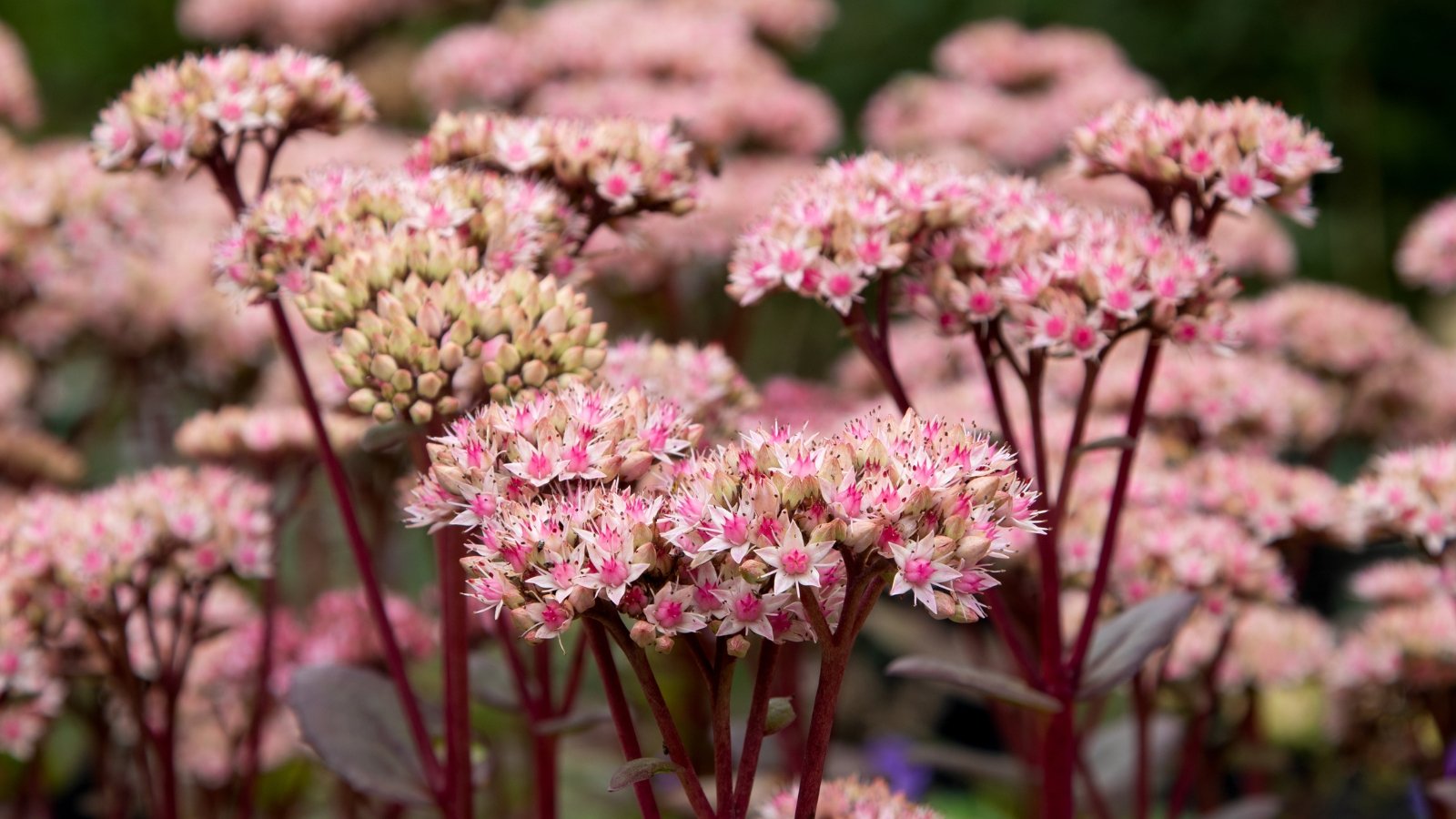When it comes time to design your yard, undoubtedly thought of considered one of my greatest objects of recommendation is to point to nature. Whilst you might have the ability to coax a desert plant to outlive all through the humid southeast or use shade fabric to guard a woodland plant from the cruel photograph voltaic current in an open yard, it’s simpler to resolve on vegetation efficiently suited to your ambiance.
So, should you’re looking for vegetation to brighten up rock gardens, stone partitions, and patios stuffed with pavers, flip to stonecrops! These vegetation develop on uncovered rocky cliffs and mossy woodland boulders, in order that they’re well-suited to the shallow, poor soil usually present in rock gardens and associated areas. Plus, they’re proof towards deer, rabbits, and completely totally different problematic pests.
And don’t assume you’re restricted to some alternatives! You most likely can select from vining stonecrops with tiny leaves that resemble pine needles and varieties that ship up tall steps topped with vibrant flower clusters. With fairly a bit differ in sorts of stonecrop, it may be highly effective to resolve which vegetation to resolve on. That’s why I’ll introduce you to 13 of the right stonecrop varieties so as in order so as to add to your rock yard.
Stonecrop and Sedum: What’s the Distinction?
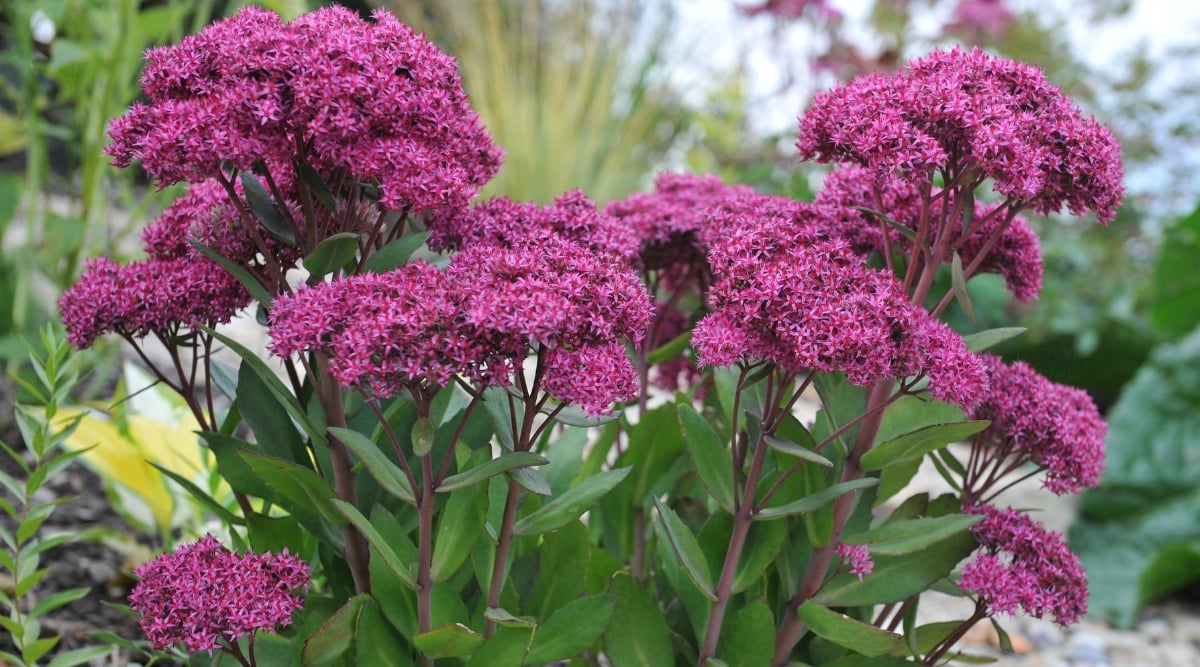

Ahead of I dive into some stonecrop varieties that work efficiently in rock gardens, let’s clear up some widespread confusion surrounding the phrases sedum and stonecrop. Are these two phrases interchangeable? Does one nestle all through the reverse?
Sedum is the genus title used to elucidate a bunch of roughly 420 species, nonetheless folks usually use the widespread time interval sedum to hunt suggestion from any of those vegetation. Utilizing the genus title to elucidate included species furthermore happens with vegetation like violas and fuchsias.
The Sedum genus used to include extra species, nonetheless scientists reclassified quite a lot of of these vegetation into the smaller, separate genera Hylotelephium and Rhodiola. Though the species in these genera technically are literally not members of the Sedum genus, folks usually nonetheless search suggestion from them as sedums.
So, what about stonecrop? It seems stonecrop is simply the widespread title for any member of the Sedum genus and associated genera. So you need to use the phrases sedum and stonecrop interchangeably.
13 Greatest Stonecrop Varieties for Your Rock Yard
Though all sorts of stonecrop develop efficiently in poor and shallow soil, every alternative has distinctive preferences. For example, some sorts of sedum develop efficiently in dappled shade, whereas others require full photograph voltaic to thrive. Examine by the use of the next traits of every plant and choose one (or extra) that’s biggest for you!
Woodland Stonecrop
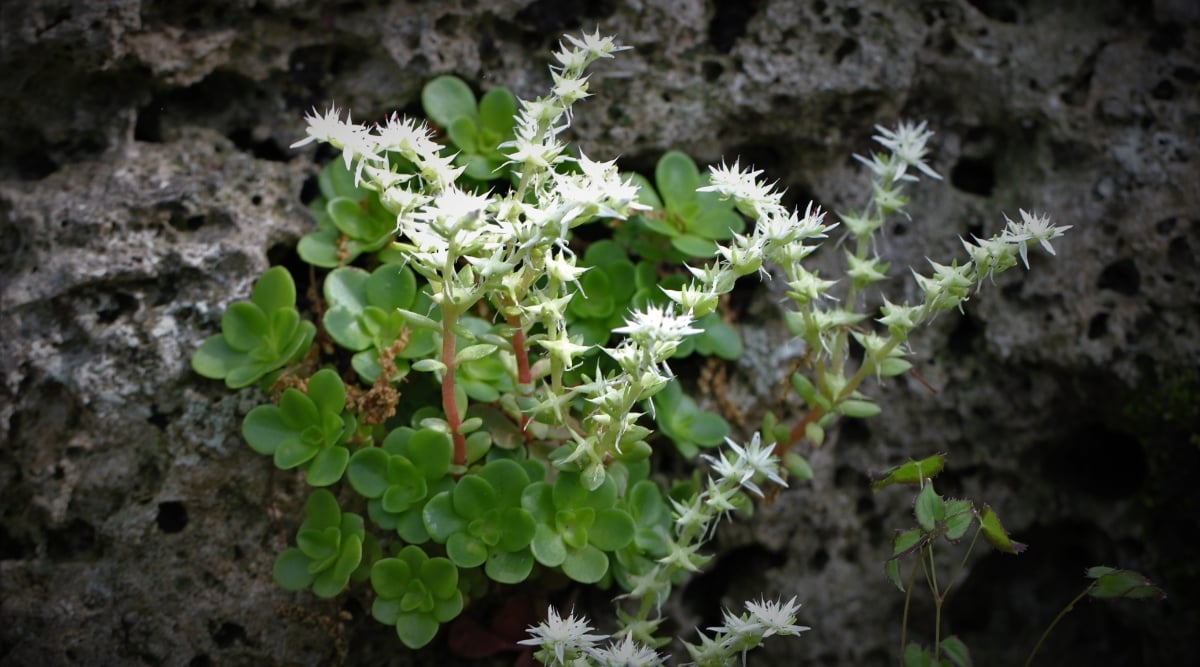

Normally known as wild stonecrop, whorled stonecrop, mountain stonecrop, and three-leaved stonecrop, this species is native to a great deal of {{the japanese}} and central United States. It naturally grows on rocks and boulders all through the dappled shade of forests, which implies it’s an excellent numerous for partially shaded rock gardens. Since these vegetation deal with moisture bigger than various kinds of sedum, they’re furthermore an excellent match for moist and mossy areas.
So far as seems to be, woodland stonecrop maintains a fast and vining type that sprawls to type a dense groundcover. Within the midst of the late spring and early summer season season, the vegetation ship up non permanent flower stalks lined in white, star-shaped flowers with 4 delicate petals.
Woodland stonecrop doesn’t concepts moist soil or shade, nonetheless it requires good drainage. Fortuitously, most rocky areas are naturally well-draining. You could even plant it in containers stuffed with sandy or coarse soil.
‘Autumn Pleasure’ Sedum
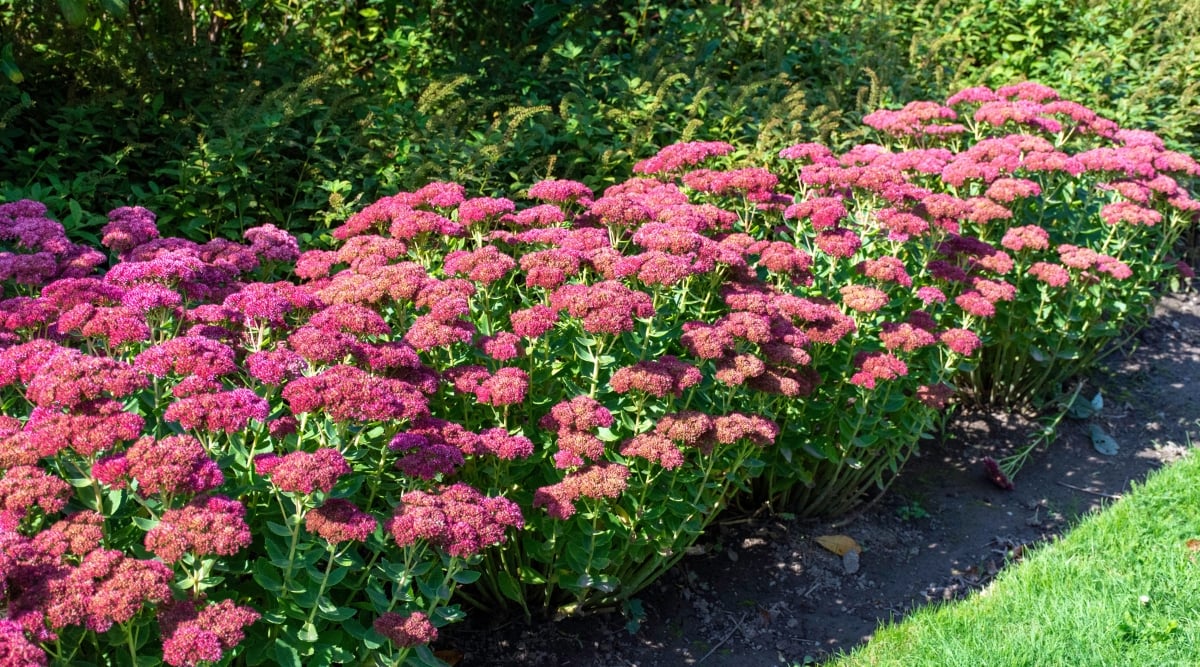

‘Autumn Pleasure’ is among the many many hottest kinds of tall stonecrops. In case you’ve seen a plant with succulent-like delicate inexperienced leaves and tall stems topped with clusters of tiny pink flowers, likelihood is good it was ‘Autumn Pleasure!’
The vegetation produce their stunning flowers throughout the midst of summer season season, and the blooms stick spherical till the autumn. Even after the flowers fade, ‘Autumn Pleasure’ offers curiosity to the yard on account of the blooms change from pink to heat shades of orange.
Since ‘Autumn Pleasure’ vegetation develop quite a lot of ft tall, they work efficiently in bigger plantings of drought-tolerant flowers. Merely make sure you don’t over-fertilize or overwater them—these vegetation develop greatest in poor, dry soil and should bear should you present them with an excessive amount of tender care.
Cliff Stonecrop
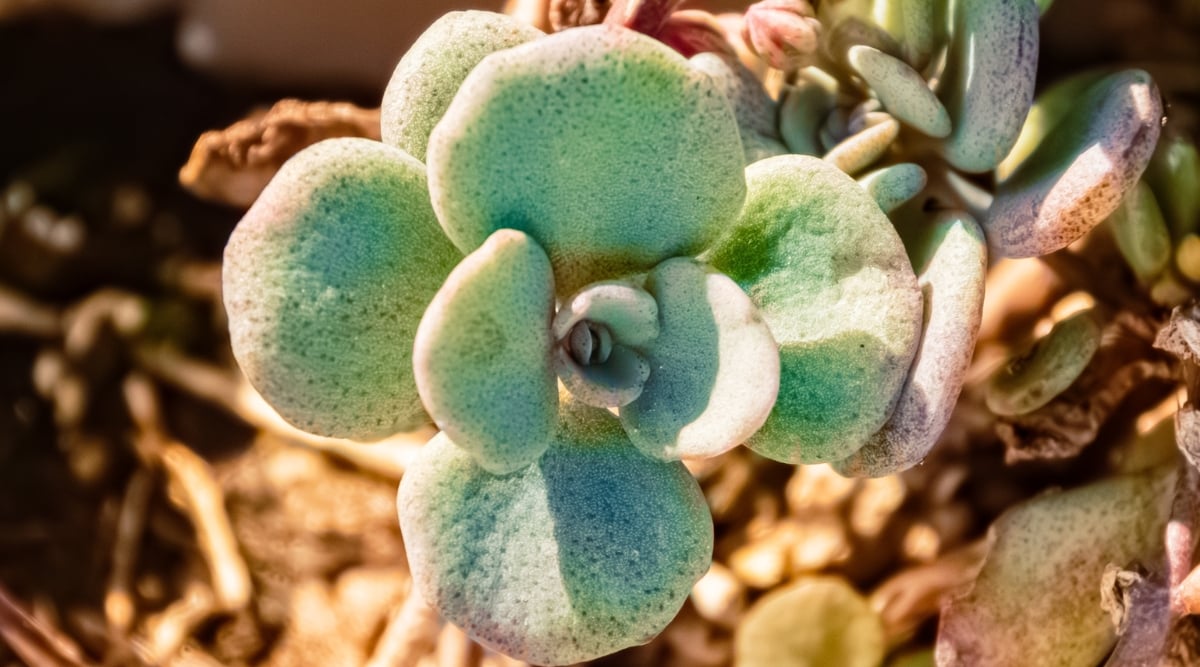

Normally known as Appalachian stonecrop, this species grows on limestone outcrops all through the Mid-Atlantic area. Nonetheless, it’s concentrated in a small home, so it’s highly effective to see all through the wild. Irrespective of this, the vegetation survive efficiently in rock gardens and make good additions to native plant gardens.
Its development type is kind of distinctive, with small rosettes of leaves defending the underside. Plenty of the leaves are delicate inexperienced, nonetheless these close to the pores and pores and skin of the rosette flip a surprising rosy pink. Provided that rosettes maintain non permanent, this stonecrop is an excellent floor cowl for rocky areas or sandy soils. Within the midst of the late spring and summer season season, the vegetation ship up non permanent flower stalks lined in white and pink flowers.
Like most sorts of stonecrop, this plant prefers poor and well-draining soil. Cliff stonecrop prefers partial shade or dappled delicate, so it makes an excellent plant for the sides of homes or the understory of taller vegetation.
White Stonecrop
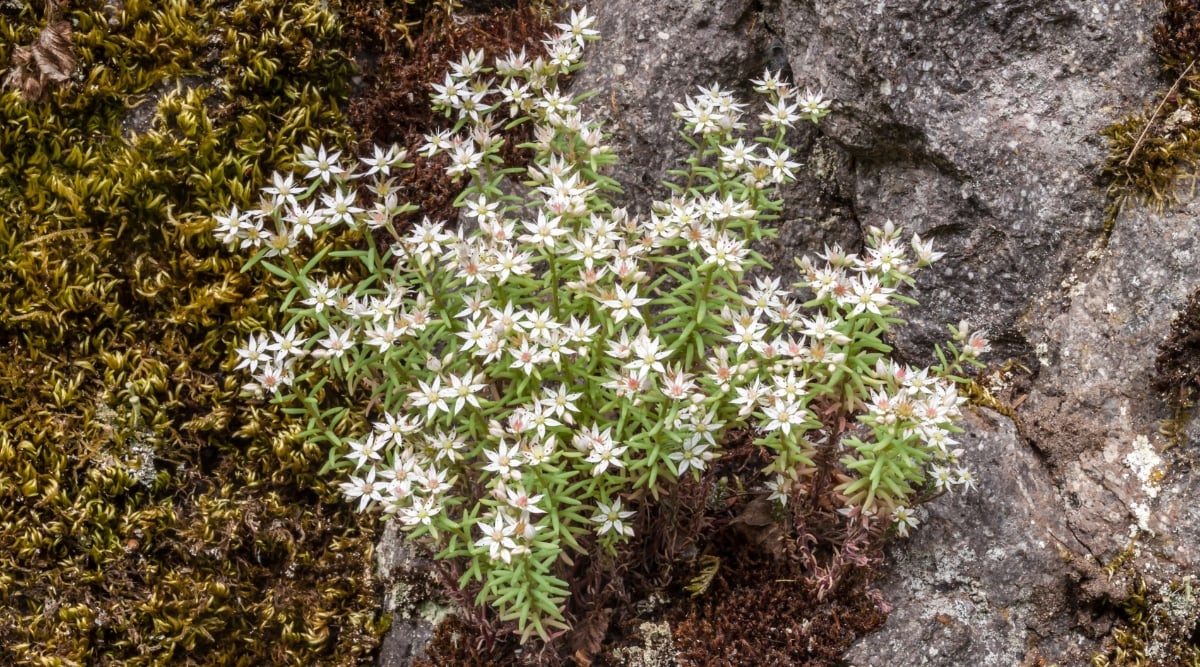

Everytime you take a look at white stonecrop’s delicate inexperienced leaves, you might marvel what the time interval white refers to. Nonetheless your confusion will fade should you see the vegetation’ clusters of white, star-shaped flowers.
White stonecrop grows by way of spreading stems that can root into the underside, so it’d correctly shortly develop and develop all through the precise ambiance. Whereas that is often a great difficulty should you’re looking for a plant to fill in empty areas, remember white stonecrop can generally choke out completely totally different low-lying vegetation.
Attributable to its excessive tolerance of vibrant delicate, excessive temperatures, and shallow soils, white stonecrop is a well-liked plant for inexperienced roofs and xeriscapes. Nonetheless, don’t assume you may stroll on this tender plant! Like most sorts of stonecrop, its fragile leaves will develop to be broken when trampled.
Cascade Stonecrop
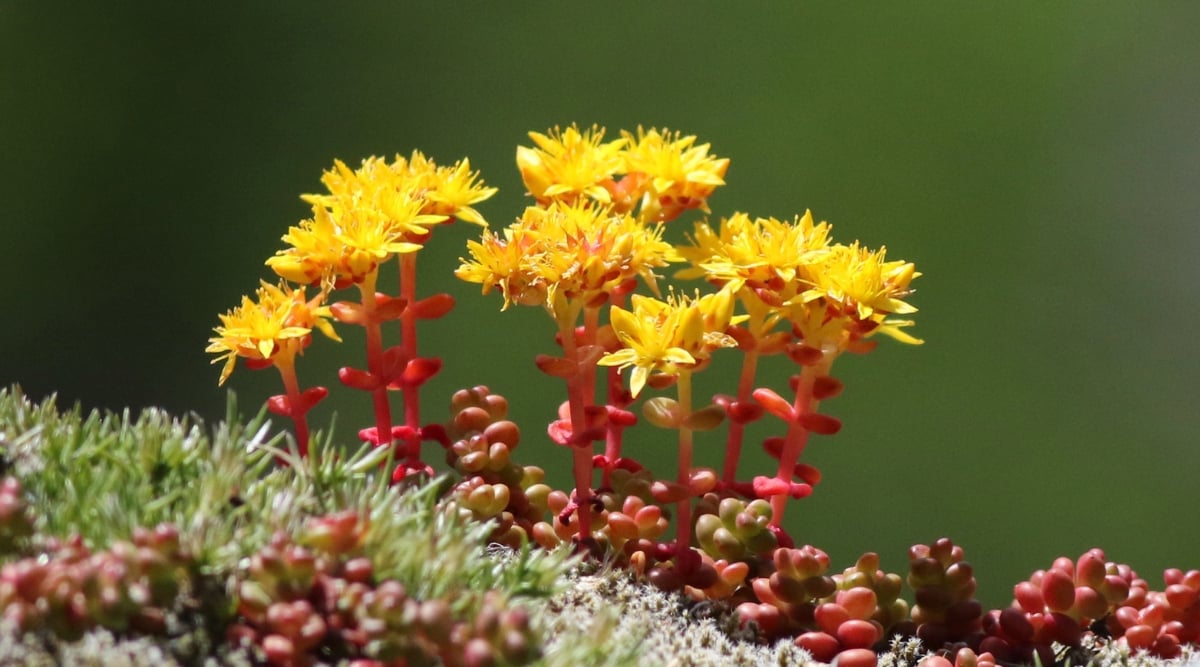

Normally known as spreading stonecrop, this plant produces small, rounded leaves alongside sprawling stems. In case you squint and use considerably little little bit of creativeness, it practically seems to be much like the stems are lined in inexperienced jelly beans! The vegetation furthermore produce vibrant yellow flowers throughout the summertime.
As its widespread title suggests, Cascade stonecrop is native to areas all through the Pacific Northwest with well-draining soil and on the very least partial photograph voltaic. Attempt planting it in rock gardens or completely totally different areas with free and nutrient-poor soil.
Sedum ‘Blue Spruce’
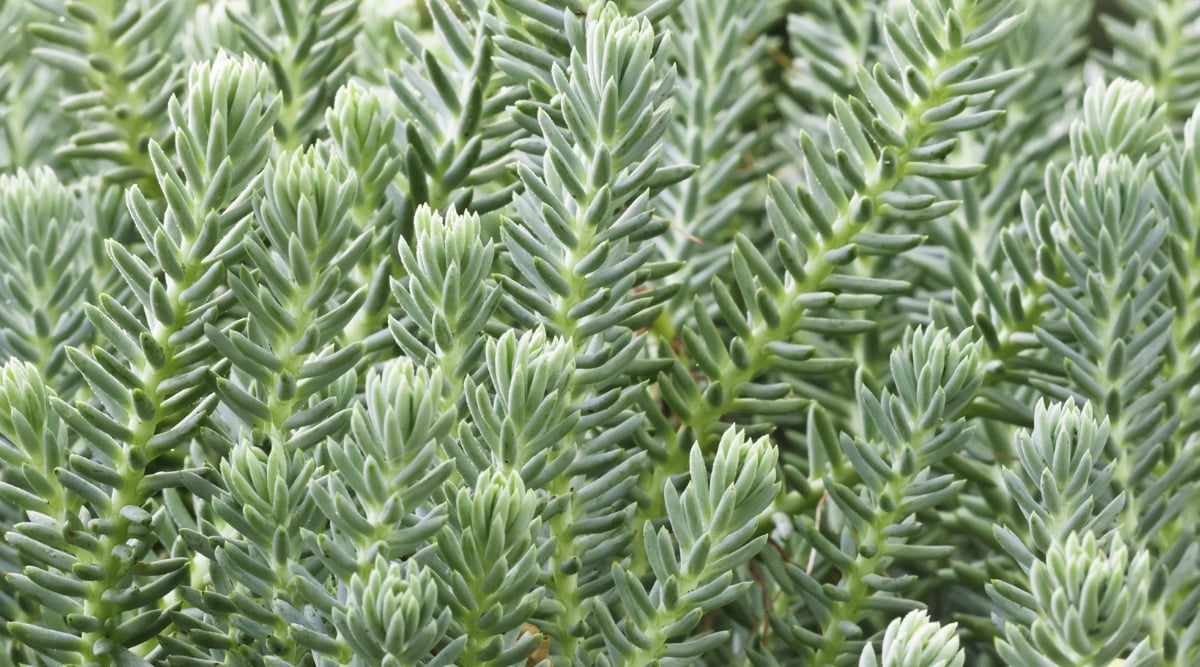

In case you’re looking for a reasonably stonecrop to fill a gravel-covered home of your yard or path over a rock wall, put ‘Blue Spruce’ in your file. This hybrid alternative produces trailing stems lined with skinny, pointed, blue-green leaves that resemble spruce needles.
Whereas the foliage alone is engaging, the vegetation furthermore ship up tall flower stalks topped with vibrant yellow blooms. These flowers proceed blooming for a couple of month and are favorites of helpful bugs, together with butterflies, ladybugs, and parasitic wasps.
So long as ‘Blue Spruce’ receives on the very least six hours of vibrant delicate every day, it’s a hardy and easy-to-grow plant. Take note of to plant this stonecrop in an home with well-draining soil, and don’t overlook these vegetation thrive with little water and fertilizer.
Sedum ‘Angelina’
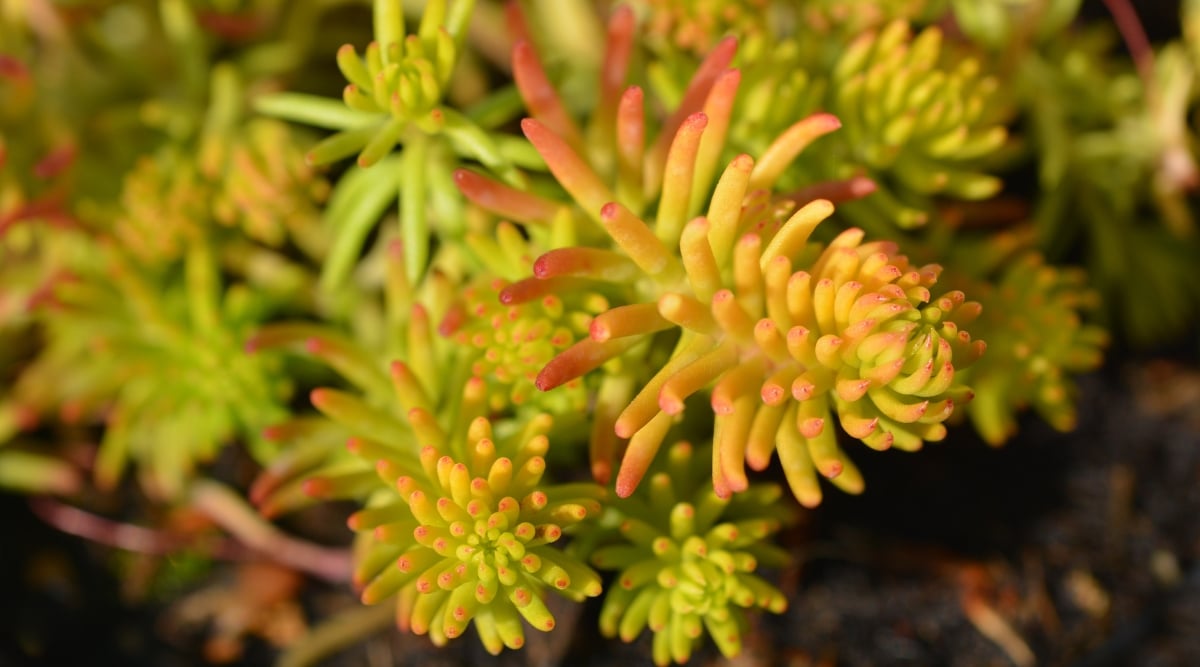

Most of the stonecrop varieties on this file cowl the underside with muted shades of inexperienced, nonetheless ‘Angelina’ mixes factors up with chartreuse and yellow leaves. S, within the occasion you need to brighten up your rock yard, that is the stonecrop for you!
‘Angelina’ is one totally different sprawling stonecrop with trailing stems that develop to type a dense groundcover. If geared up with the right care and ambiance, a single plant can lastly cowl increased than a cubic yard of area! Nonetheless, you may merely pull rooted stems from the underside to include the plant’s unfold.
The vegetation produce yellow flowers, nonetheless it’s usually highly effective to see these blooms amidst the similar coloured leaves. Whereas these flowers fade all through the autumn, the vegetation positioned on a mannequin new present as their leaves fade to orange.
Sedum ‘Coral Reef’
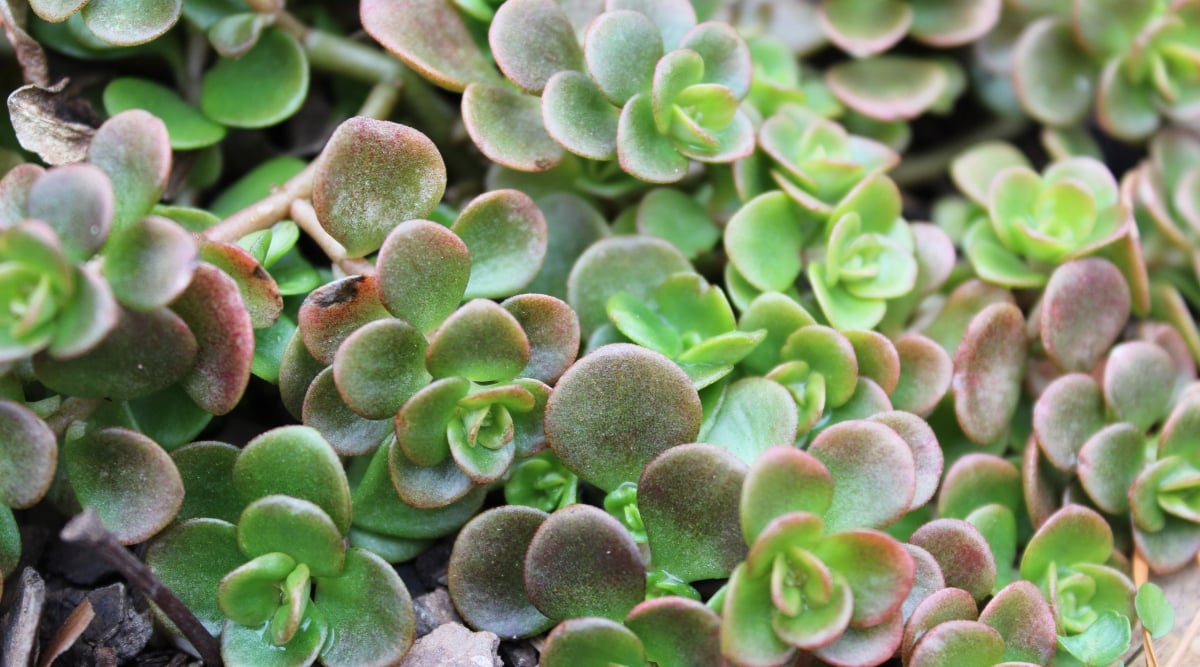

A hybrid number of the stonecrop often generally often known as Chinese language language language sedum, ‘Coral Reef’ stands out from completely totally different stonecrops attributable to its disk-shaped leaves. These rounded and flattened leaves seem alongside trailing stems, resulting in a whimsical look. Everytime you add inside the truth that the leaves are a combination of inexperienced and pink, it’s straightforward to see why this alternative is a well-liked addition to well-drained areas.
When extended days arrive, the vegetation ship up stems lined in tiny flowers that may be some shade of pink, yellow, or white. The flowers stick spherical for on the very least a month so long as the vegetation pay money for ample photograph voltaic.
To maintain up these vegetation completely happy, plant them in an home with direct photograph voltaic and well-draining soil. Every moist or dry soil is okay—merely assure that the plant isn’t sitting in mounted moisture.
Mossy Stonecrop
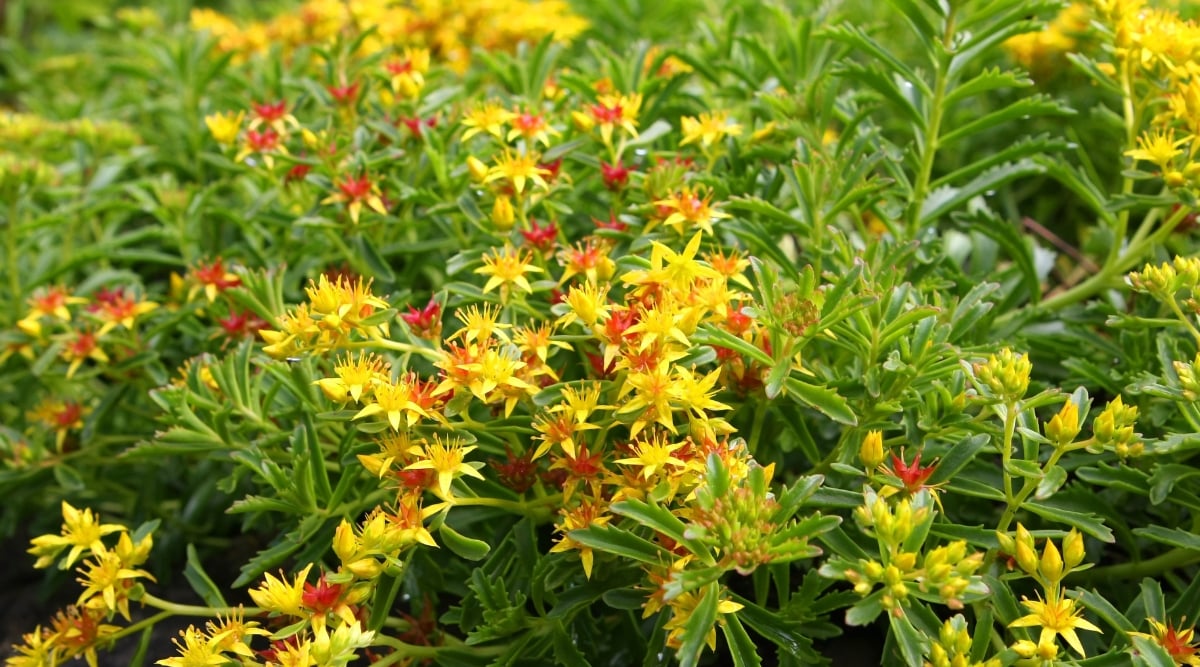

Don’t let the widespread title idiot you; that is often a type of sedum and on no account an precise moss! Nonetheless, it’s straightforward to determine the dense clusters of tiny inexperienced leaves defending a rock and assume you’re taking a look at a lush patch of moss. Nonetheless you’ll uncover the succulent inexperienced leaves develop out from non permanent stems everytime you step nearer.
Relying in your targets and the ambiance, mossy stonecrop’s dense development may be every an professional or a con. The plant’s spreading, horizontal stems shortly fill in naked and rocky floor with coloration, so it’s an excellent probability for empty rock gardens and well-draining yard patches. Nonetheless, this non-native stonecrop can outcompete widespread yard grasses and develop to be problematic.
Sedum ‘Ogon’
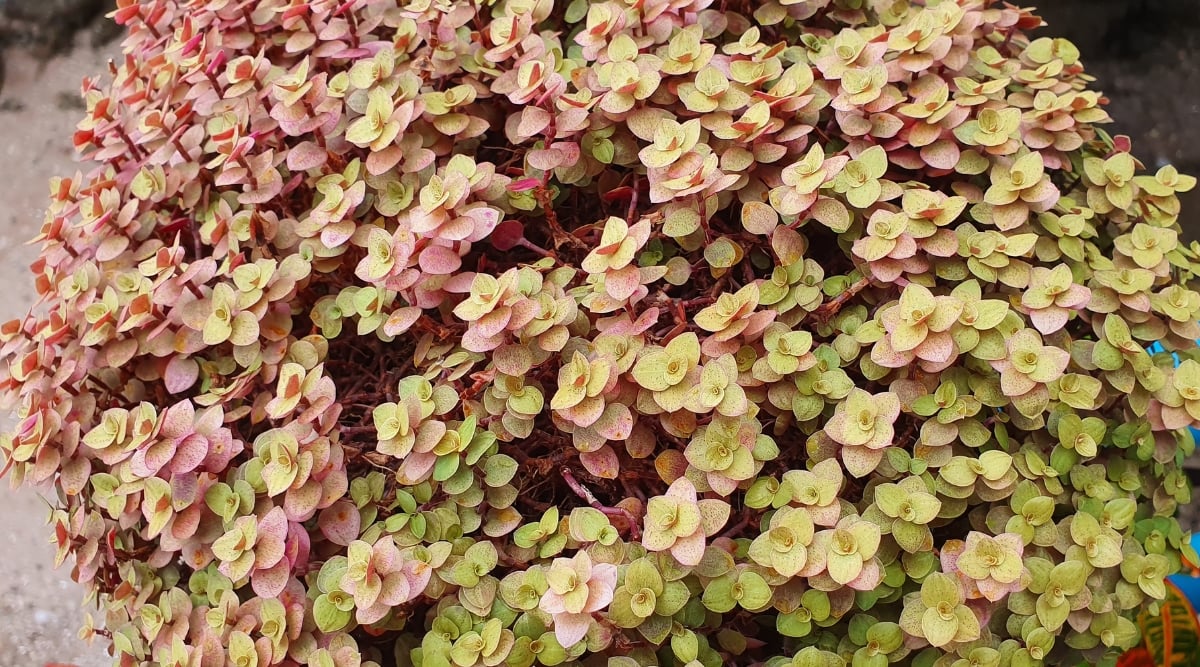

A stupendous number of Japanese sedum, ‘Ogon’ selections small rounded leaves alongside non permanent stems. The leaves maintain vibrant yellow all by the use of the spring and summer season season, they usually change to an excellent salmon pink when cooler native climate hits.
Though mature ‘Ogon’ vegetation can tolerate inexpensive to extreme drought, this stonecrop alternative may also deal with wetter soil bigger than various kinds of stonecrop. The vegetation nonetheless require well-draining soil, nonetheless they obtained’t concepts if the soil stays moist.
One totally different good thing about ‘Ogon’ is that it kinds dense patches with out choking out surrounding vegetation. On account of this actuality, you may combine it with various kinds of stonecrop and succulents with out worrying about it taking up.
Broadleaf Stonecrop
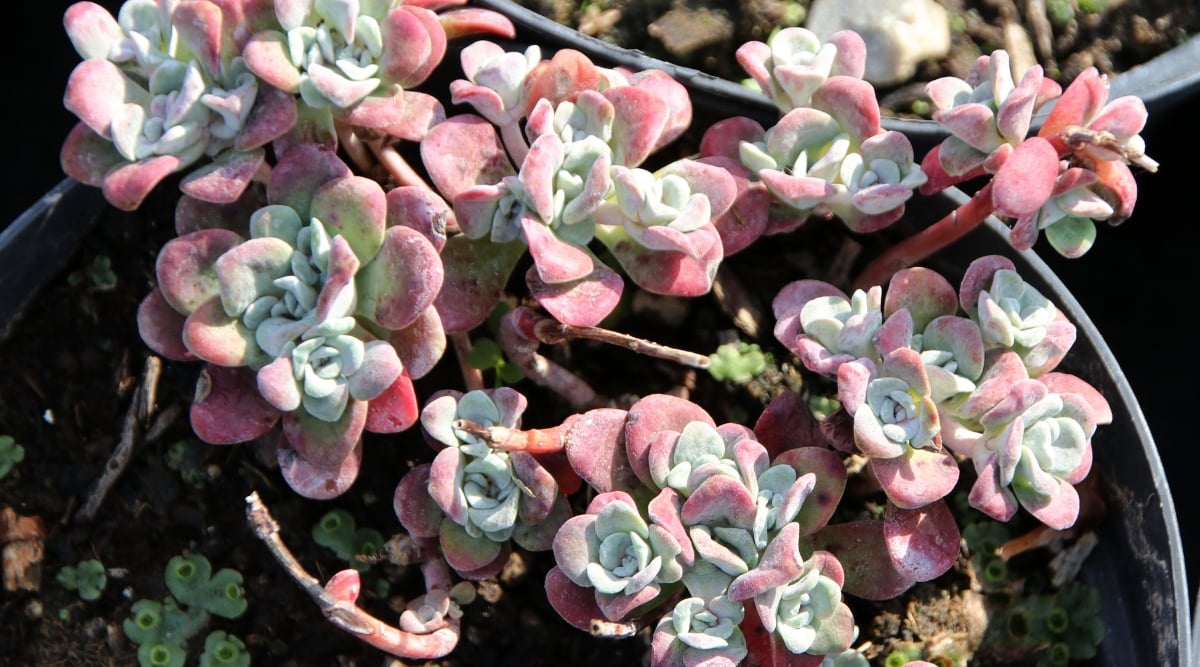

Native to the West Coast of the USA and Canada, you will uncover broadleaf stonecrop rising alongside rock faces and cliffs all through the wild. Since this plant tolerates each full photograph voltaic and partial shade, it’s an excellent addition to many rock gardens and patios, considerably all through the West. Attempt planting it beneath tall flowering vegetation and grasses since it doesn’t concepts the shade.
Broadleaf stonecrop produces non permanent stems lined with tiny, rounded, delicate blue-green leaves. The tops of the leaves type rosettes that resemble miniature wild roses. Whereas these leaves maintain inexperienced for plenty of the yr, they develop a stupendous pink hue all through the autumn.
Sedum ‘Tricolor’
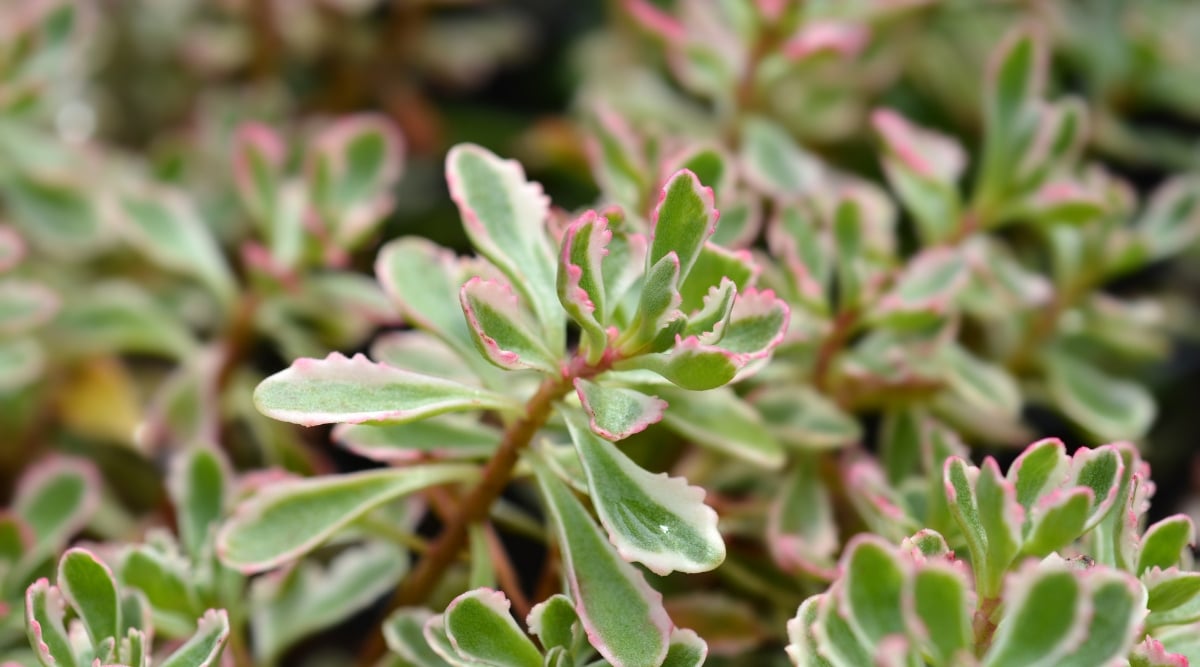

Whereas many sorts of stonecrop develop two-toned colours on account of the temperatures drop, ‘Tricolor’ stays multicolored year-round. The small leaves are delicate inexperienced all through the center and have white and pink edges. Within the midst of the autumn, all the leaf develops a pink hue. For the right coloration, plant this alternative in full photograph voltaic.
Though this plant has non permanent stems, it’d correctly develop to type a dense floor cowl. On account of this actuality, it truly works efficiently for filling in rocky patches in gardens or along with coloration to rock gardens. The vegetation furthermore produce pink flowers within the midst of the summer season season.
Though ‘Tricolor’ might look extraordinary, it grows inside the same poor, well-drained soils as various kinds of stonecrop. It might furthermore tolerate a variety of temperatures, so don’t hesitate to plant it should you dwell in a cooler area.
Grey Stonecrop
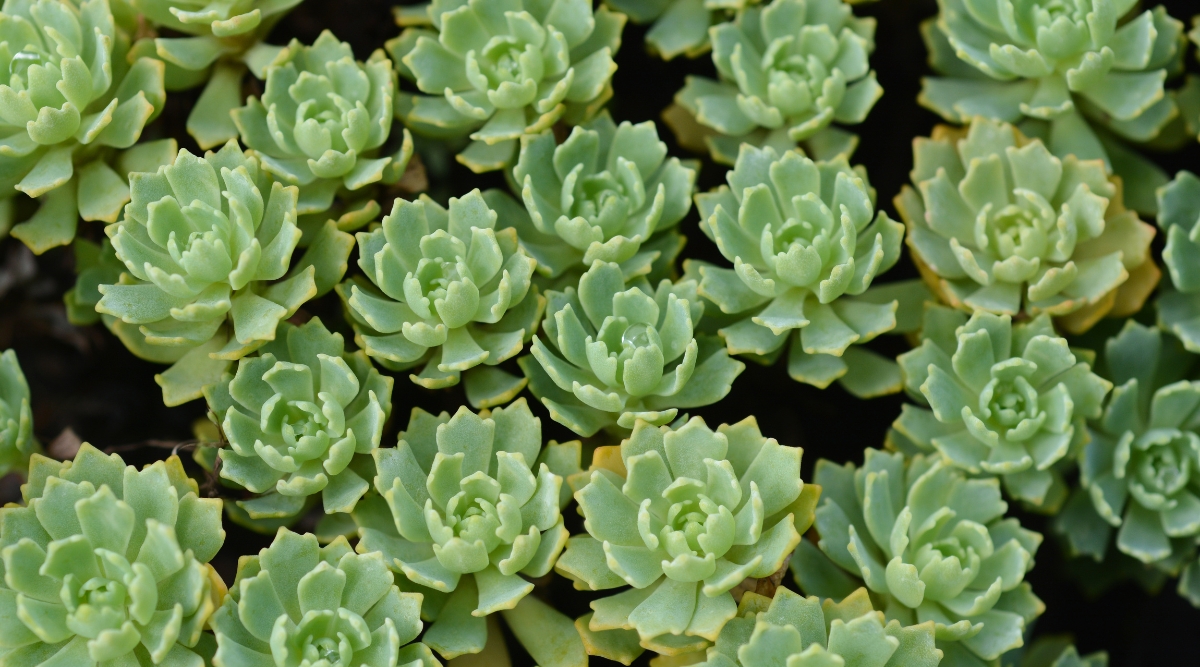

Many stonecrop varieties produce rosettes of fleshy leaves, nonetheless few rival these of grey stonecrop. These vegetation produce many tiny rosettes that resemble a cute little cabbage patch or cluster of miniature roses. Every leaf has wavy margins, aka edges, creating an much more distinctive look.
Grey stonecrop has underground runners that unfold and create dense floor covers, so you may use the vegetation to fill empty areas in rock gardens. Nonetheless, the vegetation furthermore look stunning trailing over stone partitions. Together with stunning leaves, grey stonecrop produces delicate, white, star-shaped flowers.
Remaining Ideas
No matter which stonecrop alternative you select, you may depend upon a low-maintenance plant that thrives in poor soils. Take note of to plant these succulent vegetation in an home with well-draining soil and keep away from making use of an excessive amount of fertilizer. Don’t be afraid to combine and match loads of varieties to create a rock yard stuffed with utterly completely totally different colours and textures!
